Software products are rarely so intuitive and straightforward that users can immediately get the most out of them.
Much more often than not, users need to be educated on how to use a particular product.
Therefore, failing to provide them with quality educational content might push them to look for an alternative that gives them the information they need.
Furthermore, educating your customers benefits you as well, since it encourages them to integrate your product into their everyday lives more easily, giving you more loyal users and steady revenue in the long run.
In this article, we’ll present you with proven ways of using customer education to improve product adoption.
Let’s get to it!
Personalize Education for Each Customer Segment
Regardless of the type of software product your company offers, your customers will probably differ in many ways.
Whether it’s education, technical knowledge, age, level of experience with similar products, the industry they work in, or any other of dozens of characteristics, you should consider those differences when creating educational materials.
Of course, you can’t personalize education for each and every individual who uses your product.
However, what you can do is segment your audience according to specific characteristics and adapt educational materials for those groups.
According to Kristen Baker, marketing manager at HubSpot, customer segmentation is both convenient and useful.

Source: Archbee
And when you organize and personalize educational processes for different customer segments, you enable your users to learn more quickly, absorb the information intended for them, and consequently adopt your product with ease.
However, as we mentioned, there are many ways to segment your customers. Let’s focus on one of the most common and most useful ways of categorizing—by knowledge or skill level.
Let’s look at one example.
Coinbase is a platform for cryptocurrency exchange.
Since cryptocurrency is a complex topic, they have to educate members of the general public about it if they want them to become their users.
At the same time, they have to assume that some visitors to their website are already familiar with cryptocurrencies.
That’s why they’ve created a wide range of educational materials, both for beginners and for more advanced users.
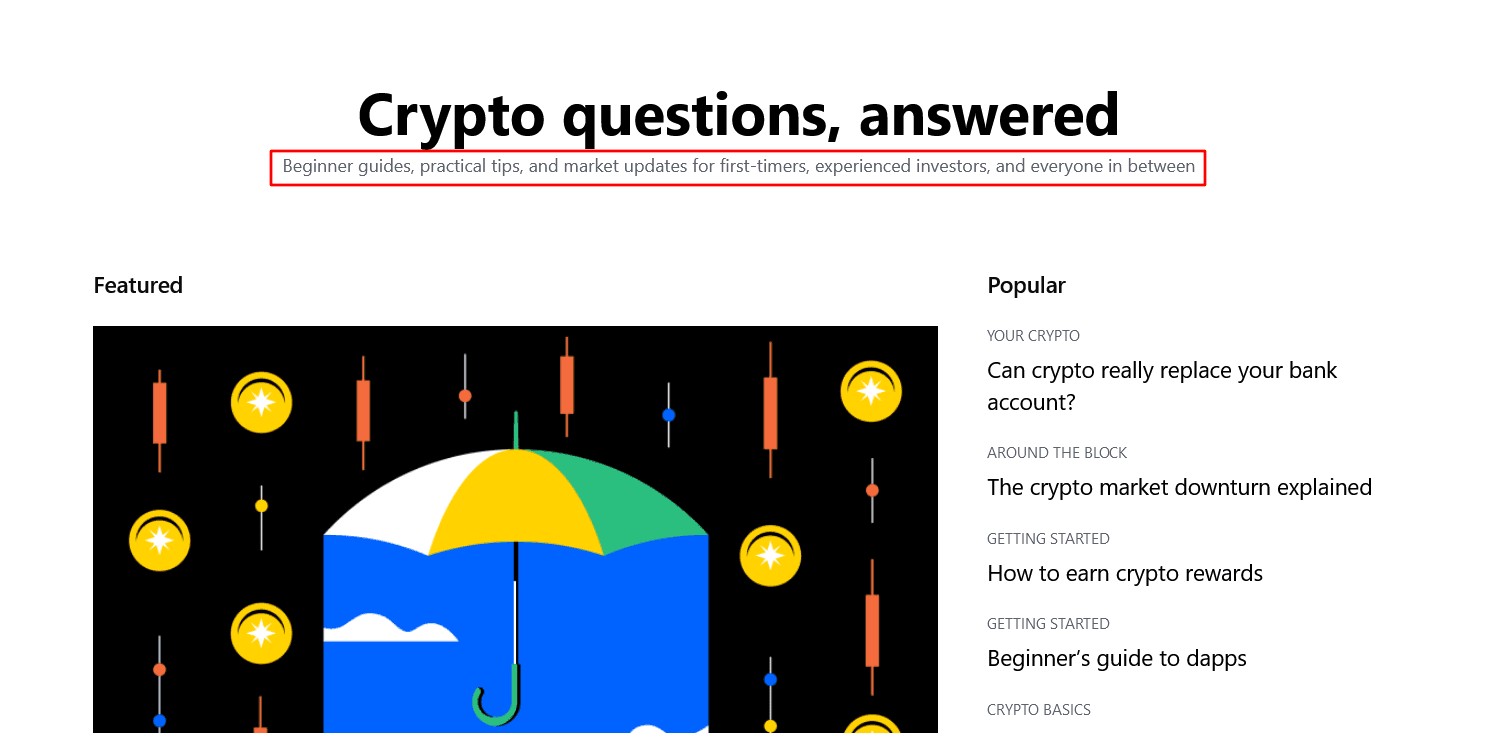
Source: Coinbase
They also made sure to promote their product within those educational articles.
For instance, there is a comprehensive article on the website explaining what bitcoin is and how it works.
But, in addition to providing a great introduction to that topic for beginners, they educate them on how Coinbase can help them purchase and manage bitcoin.
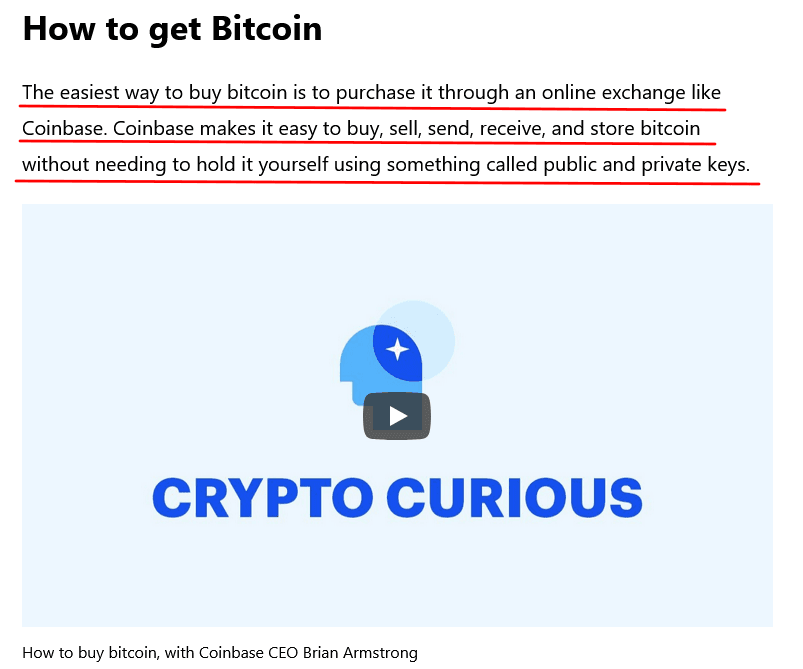
Source: Coinbase
Of course, as we mentioned, there are also educational articles for those more at home in the world of cryptocurrencies.
Again, in those articles, there is always an explanation of how customers can benefit from the Coinbase platform, like in the article about candlestick charts.

Source: Coinbase
In this instance, customers can learn about candlestick charts and use Coinbase Pro to access them.
Segmentation like that can significantly improve product adoption.
Customers with any level of existing knowledge can find educational materials that suit their needs, which will, in turn, help them use the product more effectively.
Create Content With Microlearning in Mind
Does the idea of reading a 10,000-word-long product tutorial sound appealing to you? What about watching a 2,5-hour long video guide through all of the product’s features?
We’ll guess that the answer to both of these questions is no.
A vast majority of your customers would agree.
In fact, you would struggle to find people with enough time, patience, and attention to consume all of your educational content in one sitting.
Nevertheless, your customers still want to learn about your product and discover its features. You can make that much easier for them by breaking your content down into smaller chunks.
In other words, you should embrace the concept of microlearning. Here’s how Maira Afzal, a content strategist and technical writer, defines it:
Microlearning is the idea to deliver small, easily digestible chunks of information that are focused on a single topic.
As she explains, the content in those smaller information units should always be brief, focused on one topic, and flexible.
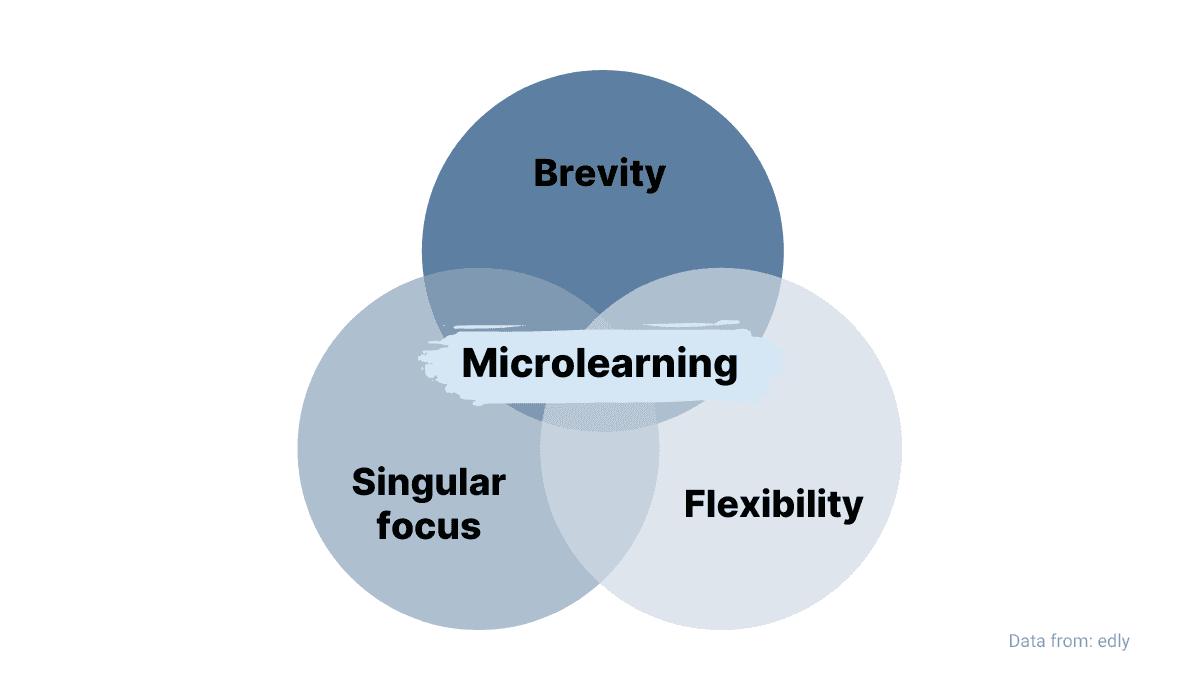
Source: Archbee
If you make sure that your content has those three characteristics, customers can learn about your product much more easily, which increases the probability that they will make it a part of their everyday lives.
So, how do you present information in a bite-sized form but still include everything necessary? A great way is to use various types of media, such as:
- Videos
- Infographics
- Podcasts
- Screenshots
Of course, you can still use text, as long as it’s short and focused.
For instance, you can combine text and visuals as Asana does in their educational materials.
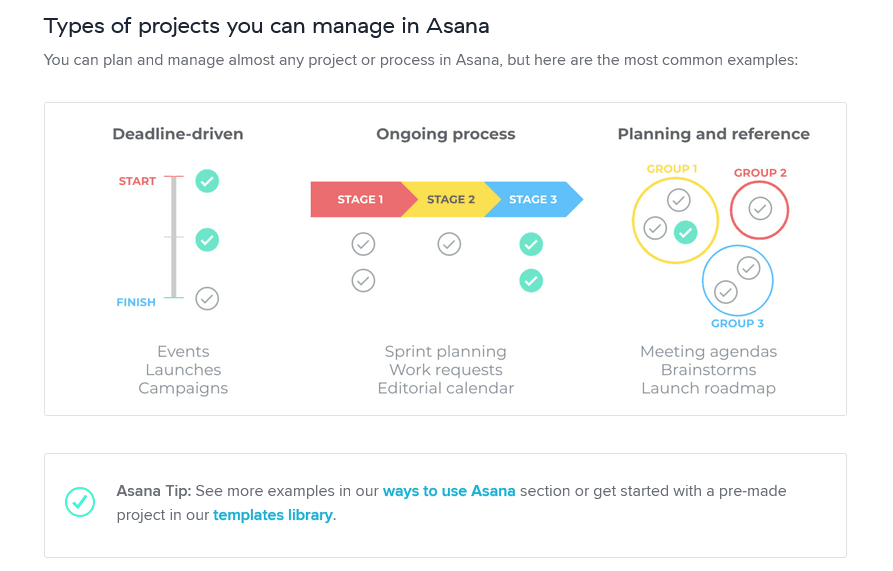
Source: Asana
As you can see above, they illustrate types of projects you can manage with their tool through an infographic, which they support with some textual information.
You can also see why visuals suit the concept of microlearning—just imagine how much text there would be if the writer explained every type of project only in writing.
Videos are another excellent way to convey a lot of information in a short amount of time.
The team at Asana knows that, so they created a lot of brief video lessons for their customers.
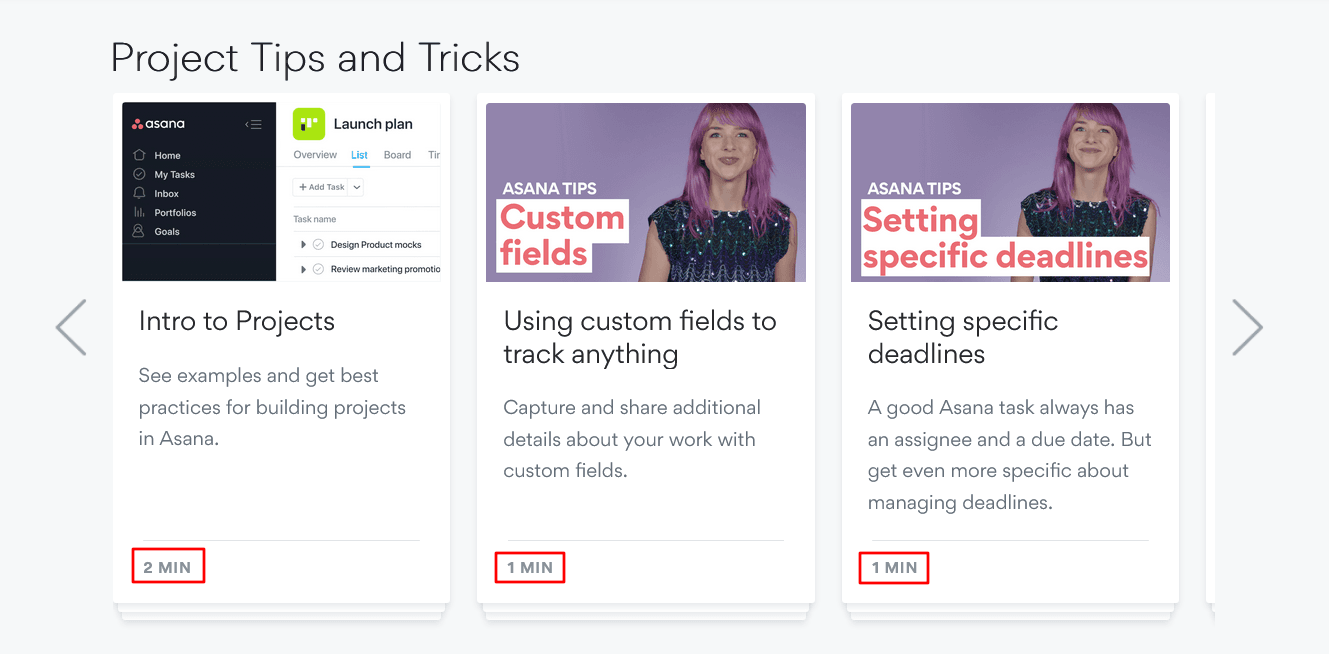
Source: Asana
Notice how short the videos you can see above are. That’s a prime example of focused, bite-sized content.
With a microlearning approach, product adoption becomes a lot simpler.
Your customers can consume the content even if they don’t have much time, and they’ll still learn valuable information they need to become proficient users.
Use Gamification to Engage Customers
One of the foundational elements of improving product adoption is increasing your customers’ engagement with the product.
Engagement is especially beneficial when new users are learning about your product.
It goes without saying that they’ll take in more information, familiarize themselves with more features, and use the product more extensively if the whole process isn’t tedious.
One of the best ways to keep their interest is gamification.
As the name suggests, gamification uses game-like mechanics in various processes. Yu-kai Chou, an entrepreneur and a big proponent of gamification, defines it like this:
Gamification is the craft of deriving all the fun and addicting elements found in games and applying them to real-world or productive activities.
So, in our case, we want to add fun and addicting elements to customer education to improve their engagement, leading to better product adoption.
There are many ways to do that, but most of them boil down to learning by doing and being rewarded for it.
For instance, take a look at the checklist below.

Source: Userpilot
As you can see, it’s a list of tasks for the user which eases them into starting to use Userpilot.
Even a simple checklist with a progress bar at the top counts as gamifying the learning process.
The users learn by completing the required tasks, and they are rewarded by seeing a completed checklist and 100% progress on the progress bar.
However, if you want to include something that seems more tangible, you can follow Duolingo’s example.
That popular language learning app uses a variety of gamification features to motivate users. One of them is their virtual currency called Lingots.

Source: Userpilot
The users can earn Lingots by hitting their daily goals in the app, unlocking achievements, etc.
In other words, they get a reward for engaging with the product, and the more they use it, the more Lingots they get. Essentially, the users get rewarded for adopting a product.
Another gamification method you can use is a leaderboard. Let’s stay with Duolingo for that one, too.

Source: Raw
Leaderboards leverage the competitive nature most people have. Earning rewards for progressing and competing with others can be a powerful driver of engagement.
Regardless of the gamification method you use to engage users, it’s important to remember that it’s meant to be fun.
Whether it’s checking items off a checklist, getting ahead on a progress bar or in the leaderboard, earning virtual coins, or something entirely different, the pleasure and addictiveness of the process can motivate customers to make a habit of using your product.
Give Customers Access to a Knowledge Base
Creating a comprehensive knowledge base for your product is not an easy task, but it can significantly impact product adoption.
You and your team need to put a lot of effort and hours into building a quality knowledge base.
It needs to cover all the features of your product, provide simple instructions on how to use them, offer solutions to possible issues, etc.
In other words, an excellent knowledge base should have every piece of information a user might need in any stage of using your product, from setting up to advanced features.
However, allowing your users to have all that knowledge at their fingertips at any time can immensely boost their education and make product adoption much easier.
Also, by providing a resource like that, you’ll be giving them what they prefer anyway.
According to Zendesk, 67% of users are more willing to learn about the product on their own than speak to customer support.
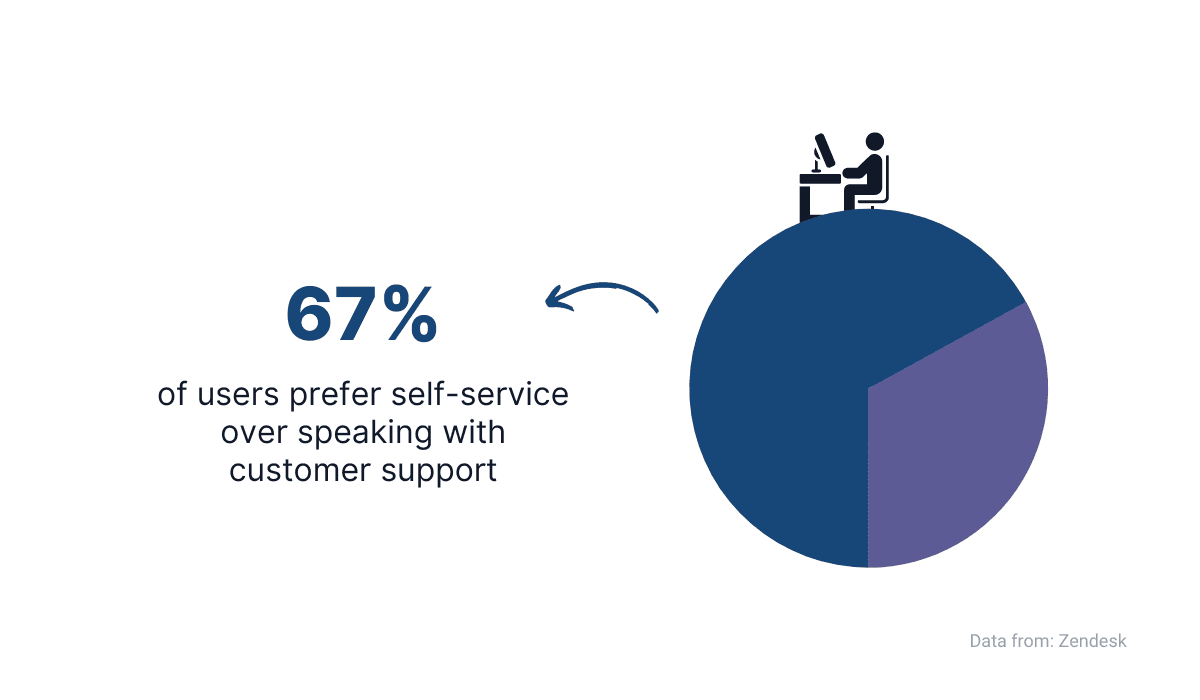
Source: Archbee
And by making their preferred resource available, you make sure they have everything they need to make using your product a part of their lives.
For example, CallerDesk, a voice communication platform for businesses, has a detailed knowledge base.
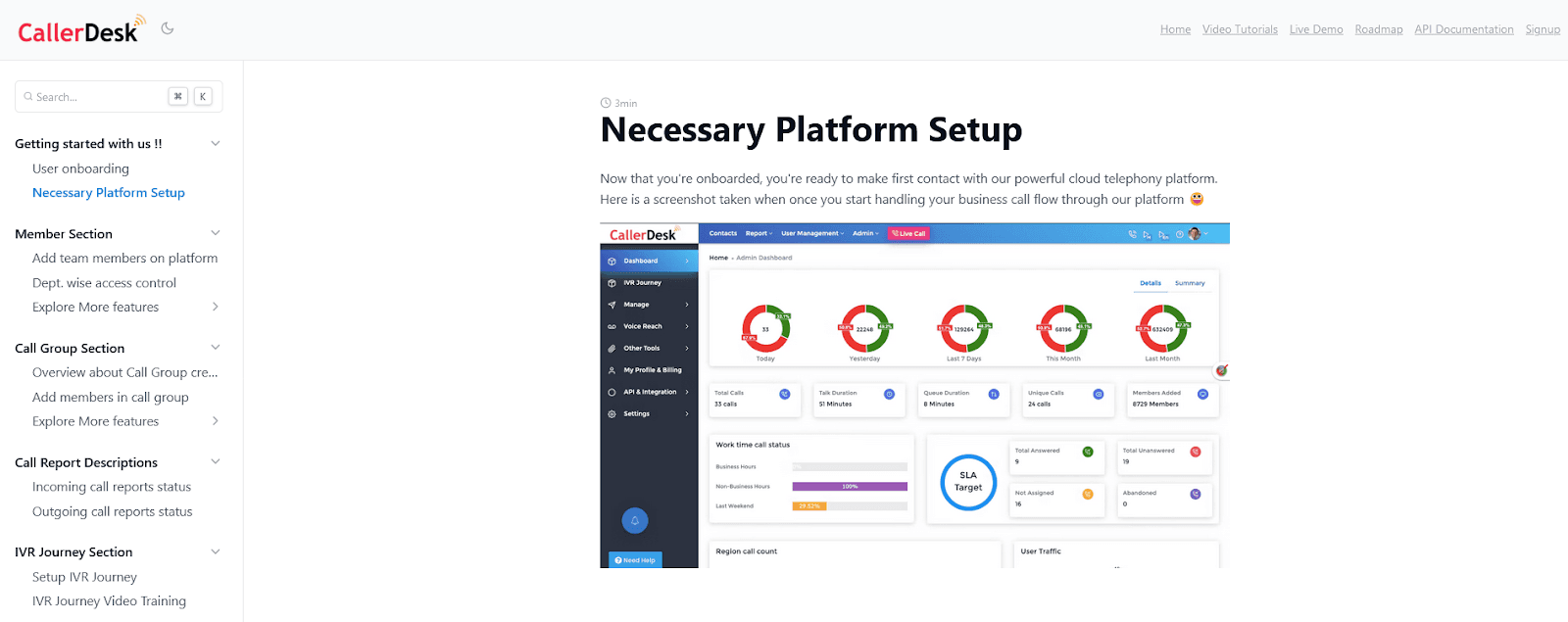
Source: CallerDesk
There’s all the information their user might need, including platform setup, call group features, call reports, integrations with other tools, and dozens of other topics.
For instance, CallerDesk’s FAQ section alone contains 21 questions and answers their customers can use to resolve their issues.
Of course, they can have a thousand help articles, but there’s no use if the users can’t find them or access them.
That’s why CallerDesk built its knowledge base in Archbee, a product documentation platform.
In addition to providing an easy-to-use tool for creating and maintaining educational content about the product, you can also make it accessible by adjusting specific settings.
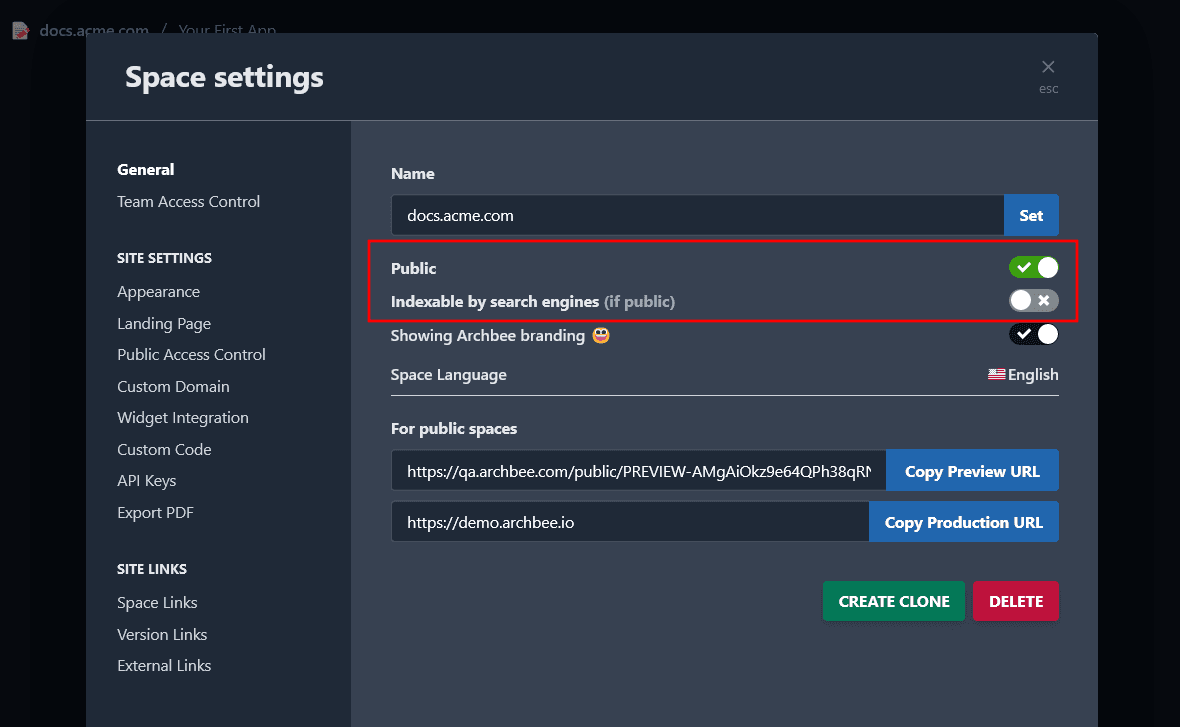
Source: Archbee
As you can see above, you can make any document public with one click.
Also, once you make it public, you can make it indexable by search engines, meaning that users can find it while googling or using some other search engine.
There are other settings that can help you to give your customers access to your knowledge base, like public access controls you can see below.
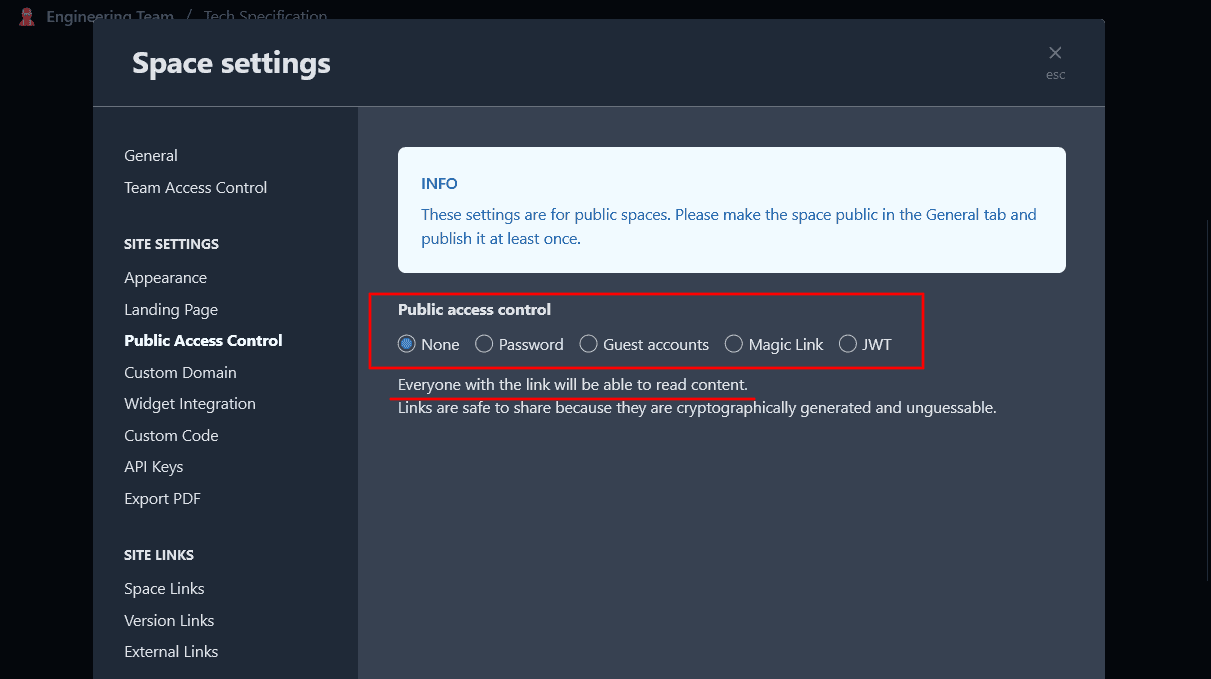
Source: Archbee
As you can see, you can give access to anyone with a link, set up passwords, request creating guest accounts, etc.
You can make it as simple or as complicated as you like.
However, if your goal is to provide customers with educational content and improve product adoption, the easier they can access your knowledge base, the better.
Adjust Your Methods for Mobile Learning
We live in a world where mobile devices serve a whole host of purposes, in all sorts of situations.
Whether we’re ordering food from home, listening to audiobooks on our morning commute, or following instructions for decorating a birthday cake, our mobile devices are what we turn to.
That’s why it makes sense to use them for customer education as well.
Sure, a customer can sit down in front of their computer and consume educational content. However, fewer and fewer people do it that way.
For instance, according to data from Oberlo, 59% of website traffic comes from mobile phones. To put that in perspective, ten years ago, the share was around 11%.
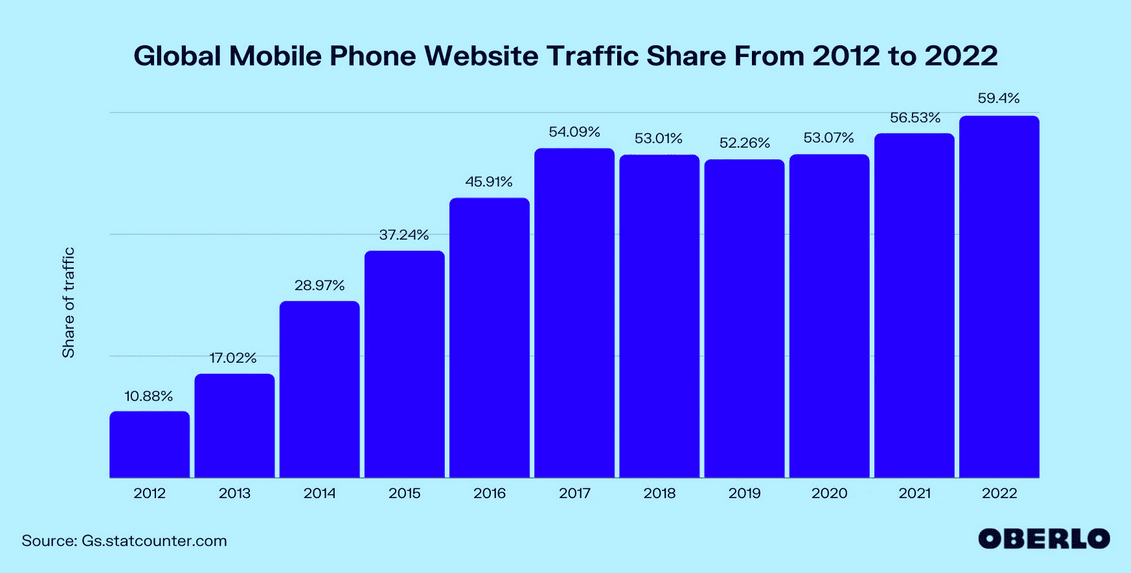
Source: Oberlo
Clearly, an increasing number of people are accessing online content via their mobile devices, and SaaS companies should adapt to that.
One way is to adjust their customer education methods to fit the fast-paced, on-the-go nature of mobile learning.
Brief instructions, bullet points, and short videos are well-suited for that. For example, HighQ has a section with concise video guides on various features.
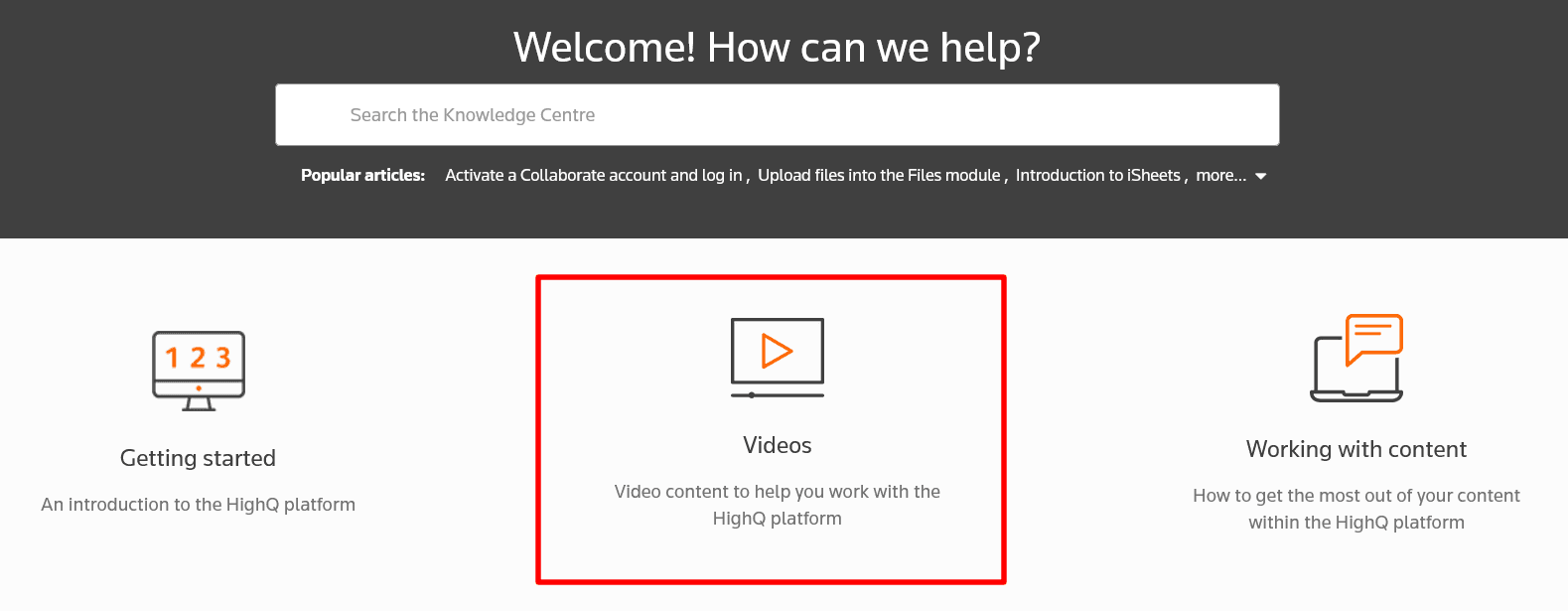
Source: HighQ
The videos are straightforward, each taking a few minutes to watch.
That’s ideal for customers consuming content on the go and without much time to invest in one sitting.
As you can probably tell by now, mobile learning is a perfect match for microlearning, which we discussed earlier.
For instance, the video referenced below is a little longer than two minutes—a great length for someone watching it on their smartphone, wherever they are.
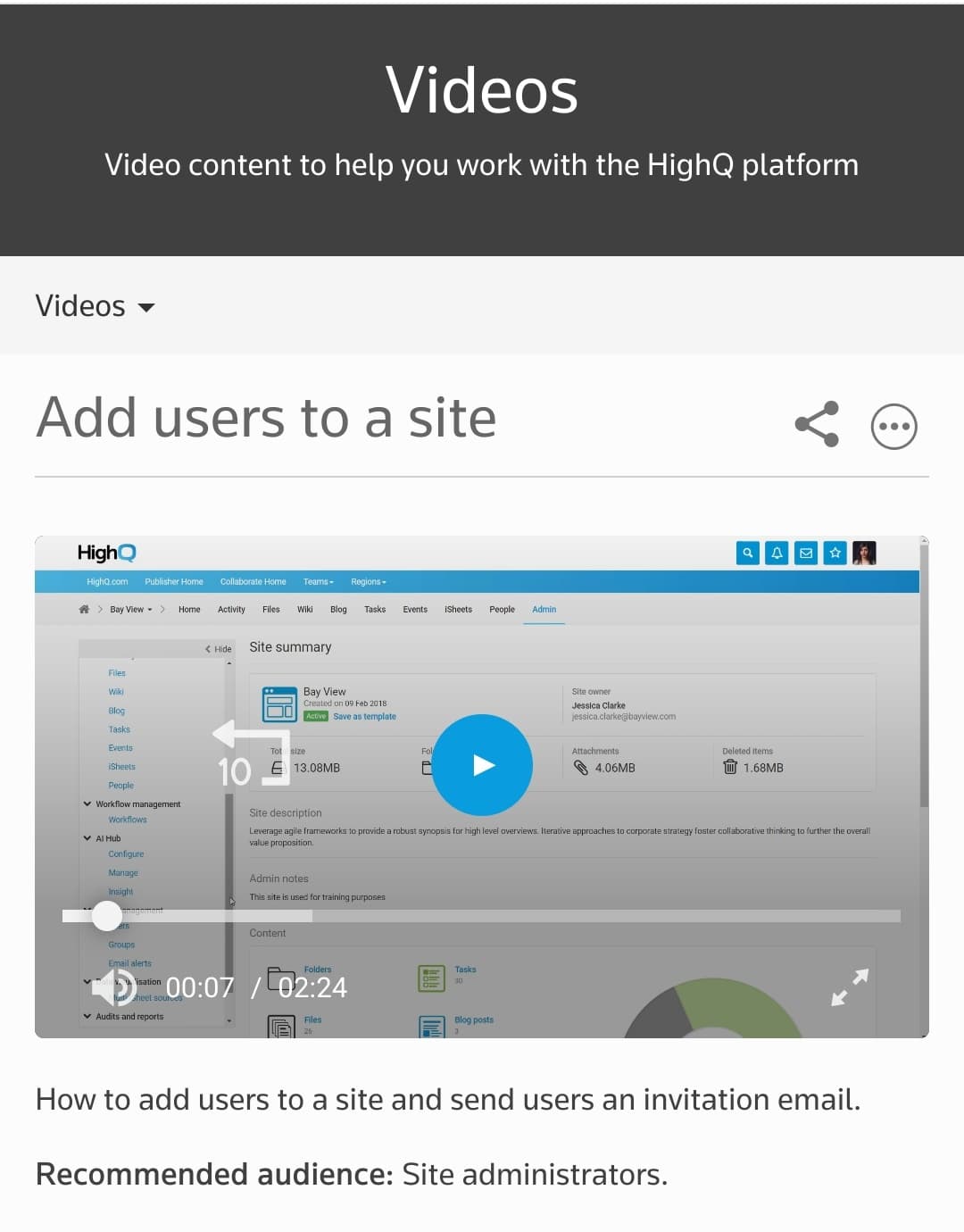
Source: HighQ
You should also make sure that your educational content is optimized for mobile screens.
Let’s look at one simple example.
Instagram has a help center that you can access via computer or mobile devices. Below, you can see how it looks on a laptop screen.
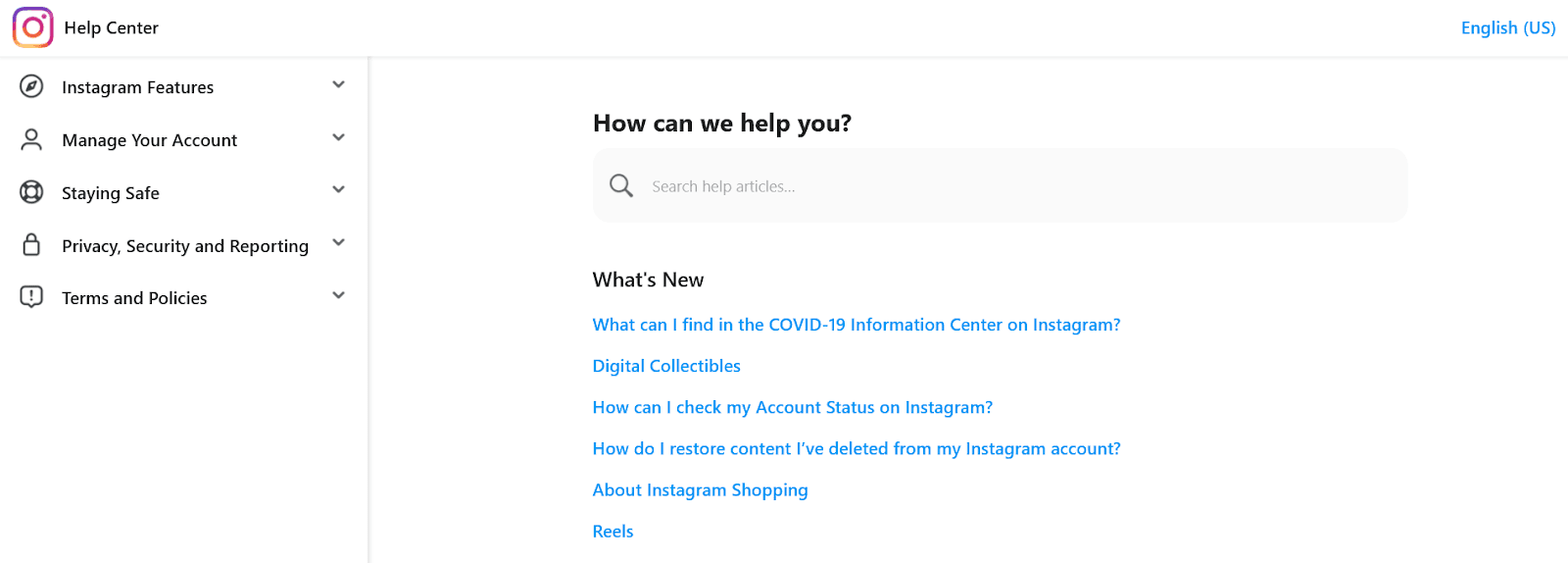
Source: Instagram
However, the screens of mobile devices are different, and this layout wouldn’t be as functional there as it is on a computer screen.
That’s why Instagram made a simple adjustment to their help center and added a hamburger menu that opens the same options you can see on the left-hand side of the screenshot above.
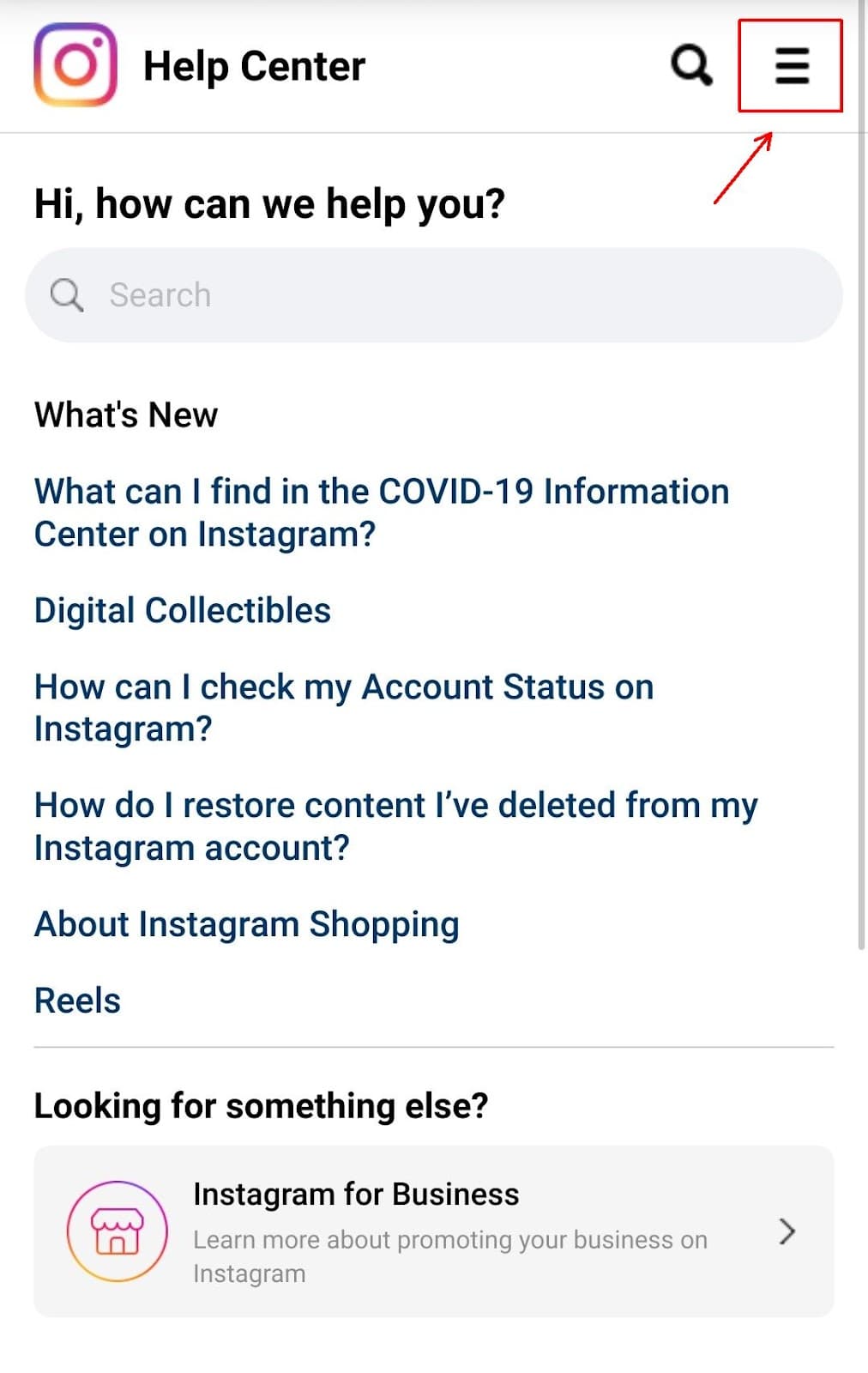
Source: Instagram
They did it because the menu on the left-hand side of a desktop version simply wouldn’t fit on the smartphone screen.
By adjusting your methods and optimizing them for mobile learning, you encourage your customers to use your educational content wherever and whenever they can, making it more likely that they adopt your product.
Conclusion
If using your product becomes second nature to your customers, you've accomplished your goal—to educate your customers about your product so well that they adopt it effortlessly.
Any SaaS company should strive for that.
Better customer education leads to more users, and more users mean more revenue, which equals business growth, success, and better chances of making more great products.
So, investing in customer education can bring many benefits. Be sure not to miss out on them.
Try Archbee's full range of features with our free 14-day trial.
Frequently Asked Questions
Focus on a few proven tactics: - Personalize learning by segment (role, industry, skill level) so each group gets the most relevant path to value. - Design content for microlearning—short, focused lessons that cover one task or concept at a time. - Add gamification (checklists, progress bars, badges, leaderboards) to keep learners engaged and moving forward. - Provide a robust, searchable knowledge base with how‑tos, FAQs, and troubleshooting guides. - Optimize everything for mobile so customers can learn on the go. Together, these approaches reduce time‑to‑value, increase confidence, and make it easier for users to adopt your product.



